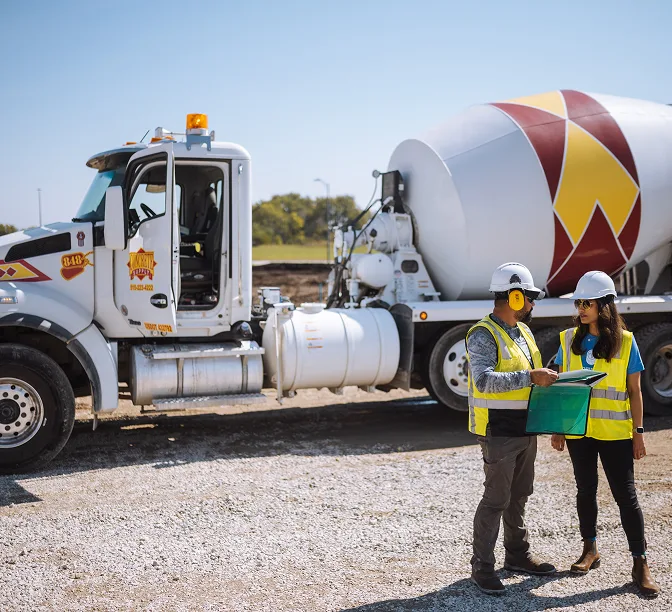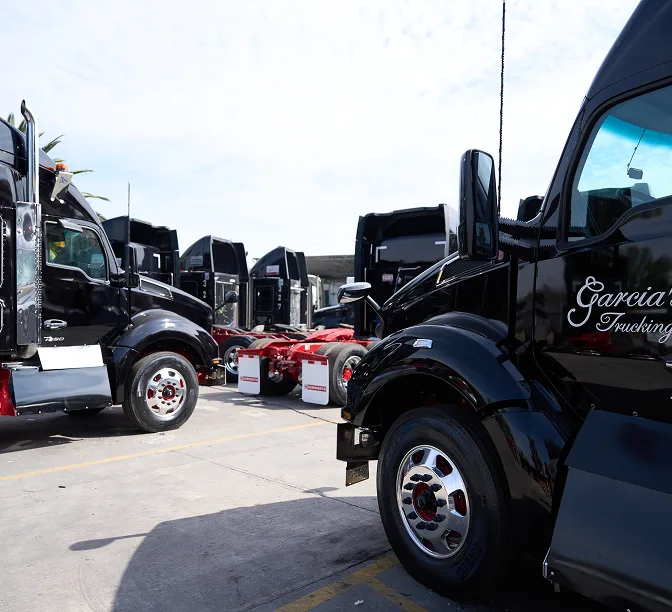Samsara AI helps reduce crash rates by nearly 75%*
Based on data from more than 2.6K fleets worldwide, the Samsara Safety Report reveals how Samsara improves crash rates, risky behaviors, and CSA scores.
Download the reportRegion | Harsh events | Speeding | Mobile usage | Crash rate |
|---|---|---|---|---|
United States | +1% | -2% | -11% | -4% |
Canada | -22% | +38% | -80% | -9% |
Western Europe | +65% | -61% | -66% | +26% |
Mexico | +17% | -25% | +238% | +60% |
Safety metrics per 1 million miles, compared to the global rate for the analyzed cohort of Samsara customers.
Canada
Canada has the lowest crash rates (-9% below the global rate), but higher speeding (+38%)
→ May be linked to expansive/vast geography and sparse population
Western Europe
Western Europe has lower speeding (-61% below the global rate) but the highest rate of harsh events (+65%)
→ Contributing factors could include stricter laws and automated enforcement, high traffic density, and complex urban road networks
Mexico
Mexico has lower speeding (-25% below the global rate), but the highest crash rate (+60%) and mobile usage rate (+238%)
→ Possibly result of security risks and limited enforcement around distracted driving
The Samsara Safety Report is based on a cohort analysis of anonymized, aggregated data points from thousands of fleets worldwide, looking at key safety metrics within customers’ first 30 months (two and a half years) with Samsara. It reveals how Samsara delivers significant safety improvements over time, as well as global safety trends by fleet size, region, and industry.
The Samsara Safety Report is a valuable resource for fleet managers, operations leaders, and business executives seeking to make informed decisions about fleet safety solutions.
Key findings of the Samsara Safety Report include:
Samsara has an immediate impact on fleet safety: Fleets with 175+ vehicles see significant and continuous reductions in risky behaviors over time. Within the first six months, customers in aggregate see a 48% decrease in harsh events, 4% decrease in speeding, and 84% decrease in mobile usage.
Safety improvements continue to strengthen over time, demonstrating the long-term value of Samsara’s technology: At 30 months (two and a half years), fleets with 175+ vehicles in aggregate see a 69% decrease in harsh events, 23% decrease in speeding, and 96% decrease in mobile usage.
Larger fleets see even greater safety improvements: Fleets with 500+ vehicles in aggregate see an 84% decrease in harsh events, 23% decrease in speeding, and 98% decrease in mobile usage after 30 months.
Customers that implement Samsara’s complete AI safety solution see a significant decrease in crash rate: Samsara’s complete AI safety solution—including Dual-Facing AI Dash Cams, in-cab alerts, and coaching—is the gold standard for improving safety and reducing crashes. Fleets with 175+ vehicles that implement Samsara’s complete AI safety solution see in aggregate a 37% decrease in crash rate at 6 months and a 73% decrease in crash rate at 30 months.
Samsara customers see significant improvements in CSA scores across all of the publicly available Behavior Analysis and Safety Improvement Categories (BASICs): Comparing fleet performance prior to deploying Samsara, and using the exact same profile for fleets with 175+ vehicles, Samsara analyzed how customers’ publicly available BASIC scores changed from the 30 months prior to Samsara to the 30 months post-adoption. In aggregate, improving customers see a 43% improvement in their Unsafe Driving score, 57% improvement in their HOS Compliance score, 35% improvement in their Vehicle Maintenance score, 83% improvement in their Controlled Substances/Alcohol score, and 59% improvement in their Driver Fitness score.
The Samsara Safety Report is based on a cohort analysis of anonymized, aggregated data points from thousands of fleets worldwide, looking at key safety metrics within customers’ first 30 months (two and a half years) with Samsara. Unless otherwise specified, the analysis focused on medium to large fleets (175+ vehicles), representing more than 2.6K fleets. The 30-month window—starting in 2023 to establish a post-pandemic baseline—provides critical trend clarity, capturing seasonal and operational variability and ensuring insights are robust and actionable. The analysis period additionally follows best practices for the Pearson correlation coefficient.
Safety performance metrics are expressed using a weighted average based on 1 million miles driven and aggregated by tenure. Speeding is represented as a share of time driven.
Key metrics include:
Harsh events (harsh braking, harsh acceleration, and harsh turning events) per one million miles
Speeding percentage of total time driven
Mobile usage events per one million miles
Crash rate per one million miles
Download the report to see the full methodology.
To understand how safety outcomes evolve over time, we measured performance by tenure on platform rather than calendar time alone. The analysis looked at key safety metrics within customers' first 30 months of using Samsara, starting in 2023 to establish a post-pandemic baseline.
Samsara customers see significant and continuous reductions in risky behaviors over time. Within the first six months, fleets with 175+ vehicles in aggregate see:
48% decrease in harsh events
4% decrease in speeding
84% decrease in mobile usage
These improvements continue to strengthen over time, demonstrating the long-term value of the technology. At 30 months, fleets with 175+ vehicles in aggregate see:
69% decrease in harsh events
23% decrease in speeding
96% decrease in mobile usage
Larger fleets see even greater reductions in risky behaviors. In aggregate, at 30 months with Samsara, customers with 500+ vehicles see:
84% decrease in harsh events
23% decrease in speeding
98% decrease in mobile usage
Samsara’s complete AI safety solution—including Dual-Facing AI Dash Cams, in-cab alerts, and coaching—is the gold standard for improving safety and reducing crashes. In aggregate, fleets with 175+ vehicles that implement Samsara’s complete AI safety solution see significant decreases in crash rate:
37% decrease in crash rate at six months
73% decrease in crash rate at 30 months
Samsara customers see significant and continuous reductions in risky behaviors over time with Samsara. Within the first six months, fleets with 175+ vehicles in aggregate see:
48% decrease in harsh events
4% decrease in speeding
84% decrease in mobile usage
These improvements continue to strengthen over time, demonstrating the long-term value of the technology. At 30 months, fleets with 175+ vehicles in aggregate see:
69% decrease in harsh events
23% decrease in speeding
96% decrease in mobile usage
Larger fleets see even greater reductions in risky behaviors. In aggregate, at 30 months with Samsara, customers with 500+ vehicles see:
84% decrease in harsh events
23% decrease in speeding
98% decrease in mobile usage
Yes, large fleets (500+ vehicles) see even greater reductions in risky behaviors in aggregate, including an 84% decrease in harsh events, 23% decrease in speeding, and 98% decrease in mobile usage after 30 months with Samsara.
The velocity of improvement is fastest in the first six months of using Samsara's technology, indicating how newfound, real-time visibility and discipline combine to create immediate improvements. This could be attributed to several factors often seen with the introduction of new technologies:
Initial awareness and correction: The initial deployment of a new technology often spurs newfound awareness and action. Drivers may become aware of habits they were previously unaware of, leading to a quick and significant change.
Targeting "low-hanging fruit": The most egregious behaviors are easiest to identify and correct. Addressing these "low-hanging fruits" leads to quick, measurable improvements in the first few months.
Focus and training: The initial rollout of a new safety program is often accompanied by focused training and communication, reinforcing the importance of the program and motivating drivers to adopt safer habits from the start.
After the initial period, the rate of improvement slows as the most obvious behavioral issues are addressed, and the focus shifts to a more gradual process of continuous reinforcement and fine-tuning. However, safety improvements continue to grow over time with Samsara, indicating how the technology continues to deliver long-term value.
Samsara’s complete AI safety solution—including Dual-Facing AI Dash Cams, in-cab alerts, and coaching—is the gold standard for improving safety and reducing crashes. In aggregate, fleets with 175+ vehicles that implement Samsara’s complete AI safety solution see significant decreases in crash rate:
37% decrease in crash rate at six months
73% decrease in crash rate at 30 months
When isolating safety improvements by camera type, in aggregate, customers who implement Dual-Facing Dash Cams see a reduction in crash rate 2x greater than customers who implement Front-Facing Dash Cams alone. Dual-Facing Dash Cams provide full visibility into both what’s happening on the road and how the driver is behaving—making it possible to alert drivers to risky behaviors like drowsiness and mobile usage. This creates a highly effective feedback loop that changes driver behavior.
CSA scores, or Compliance, Safety, and Accountability scores, are a key metric used by the Federal Motor Carrier Safety Administration (FMCSA) to assess the safety performance of commercial motor carriers. These scores are essentially a percentile ranking that compares a carrier's safety record to that of its peers. The lower the score, the better the company's safety performance.
CSA scores are based on data from roadside inspections, crash reports, and investigations over a 24-month period. This information is organized into seven Behavior Analysis and Safety Improvement Categories (BASICs): Unsafe Driving, Crash Indicator, Hours-of-Service (HOS) Compliance, Vehicle Maintenance, Controlled Substances/Alcohol, Hazardous Materials (HM) Compliance, and Driver Fitness.
Two of the seven BASICs, Crash Indicator and Hazardous Materials Compliance, are considered private and only accessible by the motor carrier itself and authorized FMCSA and state enforcement personnel. The other five BASICs are public and can impact various aspects of a carrier’s operations, including insurance premiums, the frequency of regulatory inspections, and their reputation with customers, the public, and potential employees.
Comparing fleet performance prior to deploying Samsara, and using the exact same profile for fleets with 175+ vehicles, Samsara analyzed how customers’ publicly available BASIC scores changed from the 30 months prior to Samsara to the 30 months post-adoption. In aggregate, improving customers see:
43% improvement in Unsafe Driving score
57% improvement in their HOS Compliance score
35% improvement in their Vehicle Maintenance score
83% improvement in their Controlled Substances/Alcohol score
59% improvement in their Driver Fitness score
Canada has the lowest crash rates (-9% below baseline) and mobile usage (-80%) globally, making it one of the safest countries for road traffic according to our data. This may partially be due to its strict laws, rigorous enforcement, and high fines. Interestingly, despite this, Canada has the highest rate of speeding (+38%) and the lowest rate of harsh events (-22%), which may be linked to its vast, rural geography and sparse population.
Mexico has speeding rates that are moderately below the global rate (-25%), which may partially be due to road conditions and older vehicles. Despite the lower speeding rate, Mexico has the highest crash rate (+60%) and mobile usage rate (+238%) among the regions analyzed. This suggests that factors other than speeding, such as security risks and limited enforcement around distracted driving, could be more significant contributors to crashes.
The transportation and warehousing industry sees significantly below-baseline harsh events (-52%), mobile usage (-23%), and crash rates (-31%). This could be attributed to the fact that driving is the primary profession for those behind the wheel, and there are a lot of resources dedicated to coaching and training drivers in this industry. Many companies in this sector have a high level of operational maturity, and were early adopters of using data from telematics to coach drivers, optimize routes, and enforce strict safety policies, leading to improved outcomes.
An elevated crash rate (+106%) for mining/oil/gas fleets is likely due to extreme operating conditions and remote locations. Vehicles in this sector often travel on rough, unpaved roads and are exposed to unique hazards. Below-baseline rates of harsh events (-8%), speeding (-7%), and mobile usage (-37%) may reflect strict safety policies and the use of specialized, heavy-duty vehicles that are not conducive to aggressive driving or phone use.
The full Samsara Safety Report is available for free here. This report is a valuable resource for operations leaders, fleet managers, and business executives seeking to make informed decisions about fleet safety solutions.


















